Since hitting the road after our birding tour to Borneo, it’s been somewhat hectic, as our target plant genera have been rather widely spaced, and so we have been racking up the miles. In our post-retirement 2017 – 2022 road trips, we averaged 75 – 100 miles per day, and in the first two months of this year’s road trip we covered a still reasonable 105 miles per day. But in the period covered by this account (July 17 – August 28), we have driven about 150 miles per day, cutting into available time for things like writing blog posts. So I apologize for the length of this entry and hope you will tough it out. 🙂
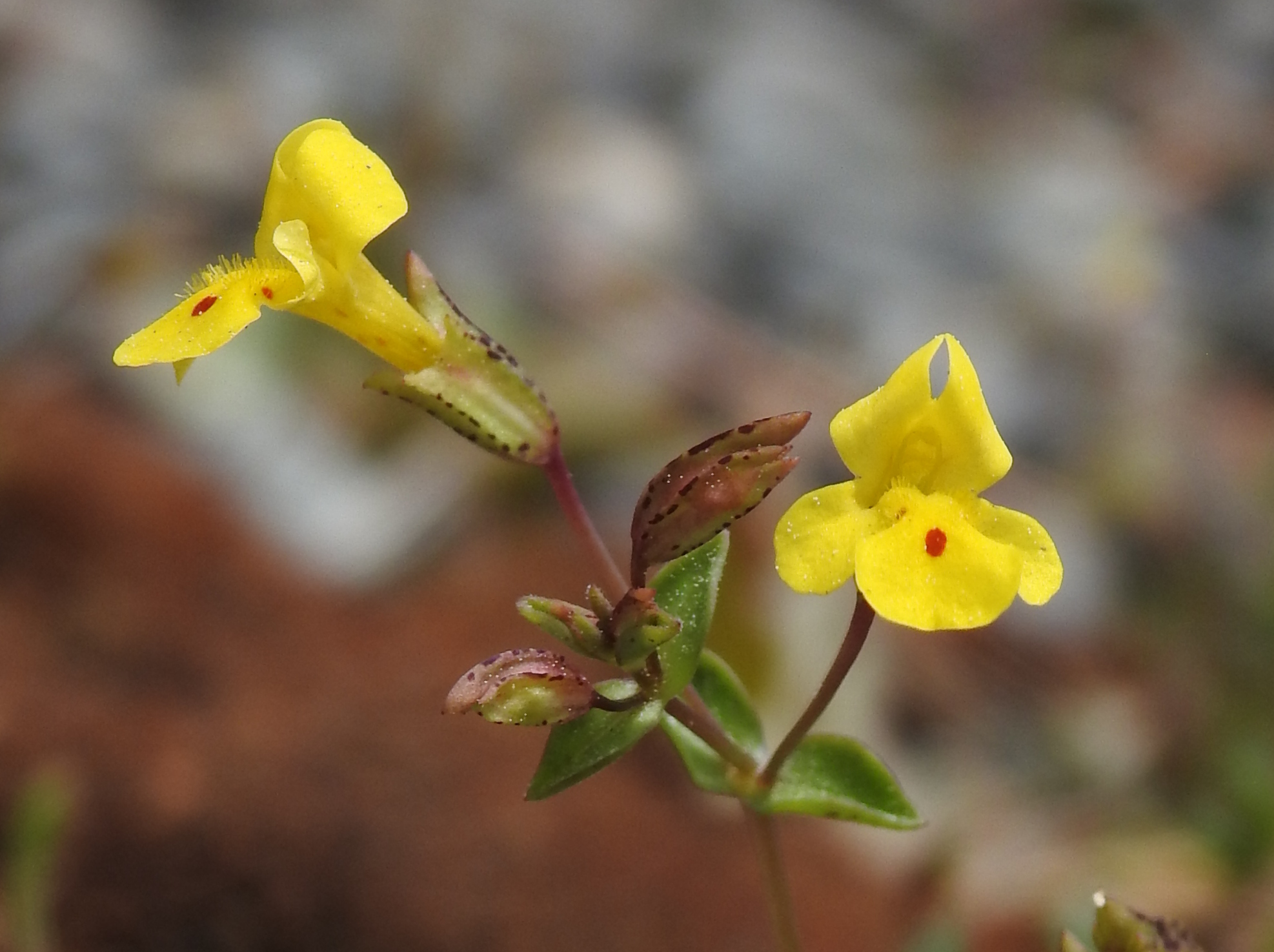
We headed for Mono County, east of the Sierra Nevada, to meet up with our friend Merrilee from Southern California. We spent three days botanizing and camping together, which was great fun. In addition to marvelous scenery, we had fine sky phenomena: rainbows, sunsets, and stars. The season was so delayed due to heavy snowfall the previous winter, that the roads in the White Mountains and over Tioga Pass were still closed, preventing or hampering some genus searches. But the late season did give us a second chance to look for two genera we missed earlier in the year, Lathrocasis and Yosemitea, and we were pleased to find both of them.

While in central Nevada in June, we had passed a Bureau of Land Management sign for “Lunar Crater”, which sounded interesting, but we did not have time to investigate. A month later I was researching the genus Johanneshowellia, which we had failed to find in several attempts during the spring, and learned that the rarer of the two species in the genus was known only from one place on earth – Lunar Crater! So we decided we had to pay the site a visit, despite it adding 1.5 days to our itinerary and our having no detailed information on how to find the plant once there. The heat was so bad we made sure to arrive shortly before sunset, so we could camp and look for the plant first thing in the morning. The crater was in fact very interesting, being rather symmetric and quite dramatic in appearance. In the fading light we quickly located the Johanneshowellia crateriorum, growing in cinders along the rim, and then photographed it the next morning when there was more light. We headed out when the temperature hit 100F. What a marvelous place!
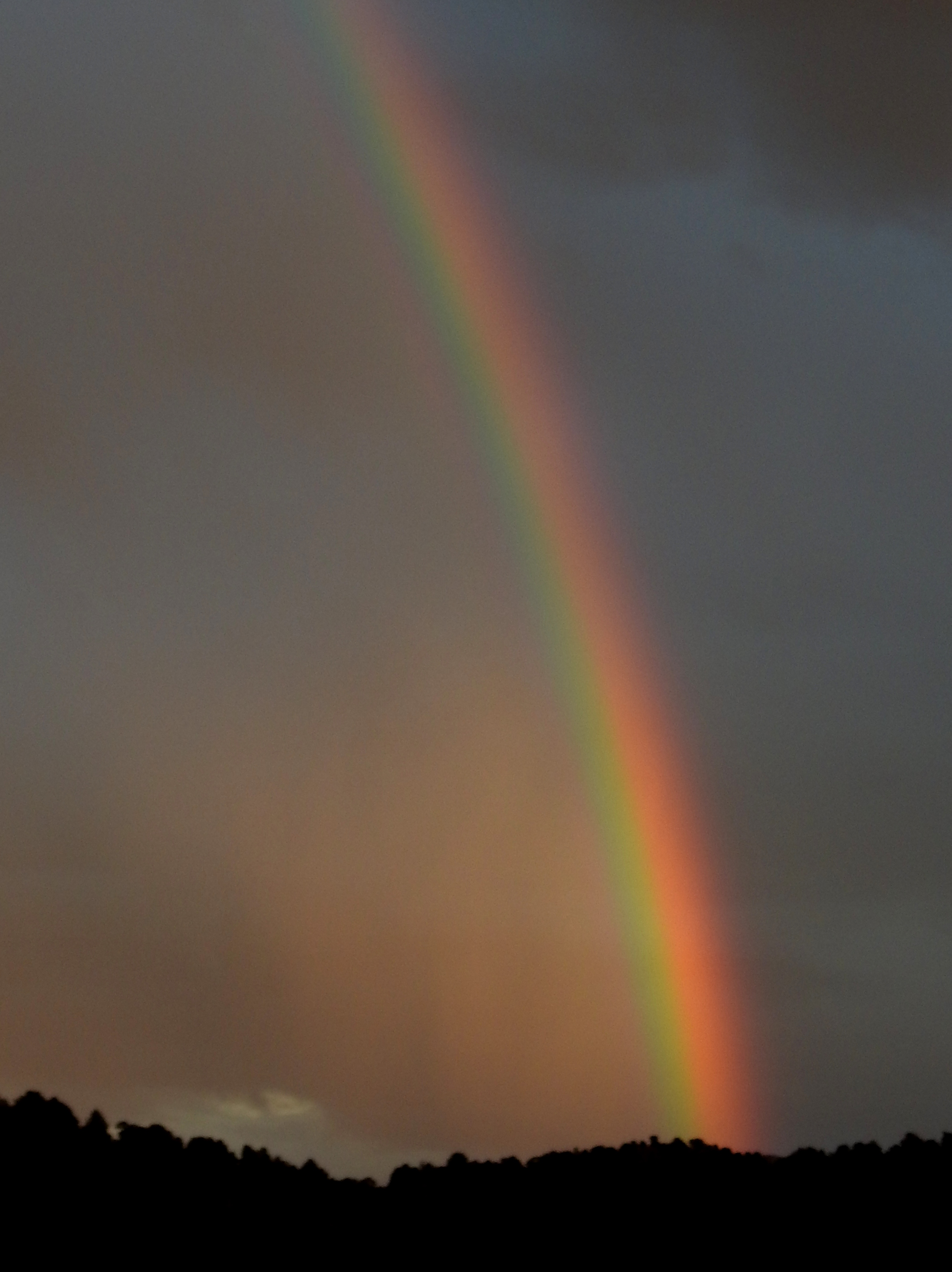
We next headed for the Pacific Northwest with two brief stops near Lake Tahoe for target genera. On one search we had long, close views of a female Williamson’s Sapsucker, always a treat to see. Once in Oregon, every search involved some combination of uncomfortable driving (narrow Forest Service roads with drop-offs and/or lumber trucks), challenging navigation, and/or problematical hiking (bushwhacking or going through bad burns). But we had good success, locating Bensoniella, Kalmiopsis, Columbiadoria, and Filipendula, each of the four species involved having rather small ranges.

On the drive to the Columbiadoria, appropriately in the Columbia River Gorge, I started having intense abdominal pain and so we ended up in the emergency room in Hood River, OR. They did a great job, diagnosing a kidney stone after a CT scan, and releasing me about four hours after arrival. I passed the stone about 30 hours later, which was a relief.
![Lunar Crater, Nye Co., NV [timestamp 15 hours late]](https://nomadic-naturalists.org/wp-content/uploads/2023/09/dscn5692.jpg)
For a change from botanical searches, we did a mammal search, trying for about the 8th time to see an Aplodontia, the only species in its family, representing an ancient rodent lineage. About 40 years ago, I actually named my first vehicle, a four-wheel drive Subaru wagon, “The Aplodontia”, as I fancied it was about the right color and shape. We have heard this species briefly once or twice, and have seen vegetation around active holes that was moved overnight, but have never seen the animal, despite decent efforts at five or more locations. Our search area was around Lolo Pass, on the shoulder of Mt. Hood, and it was the third time we had tried in this site over the years. We found fewer burrows than on the previous trip. We staked out the best looking set for about four hours starting in late afternoon, and using thermal imagers after dark, but to no avail.
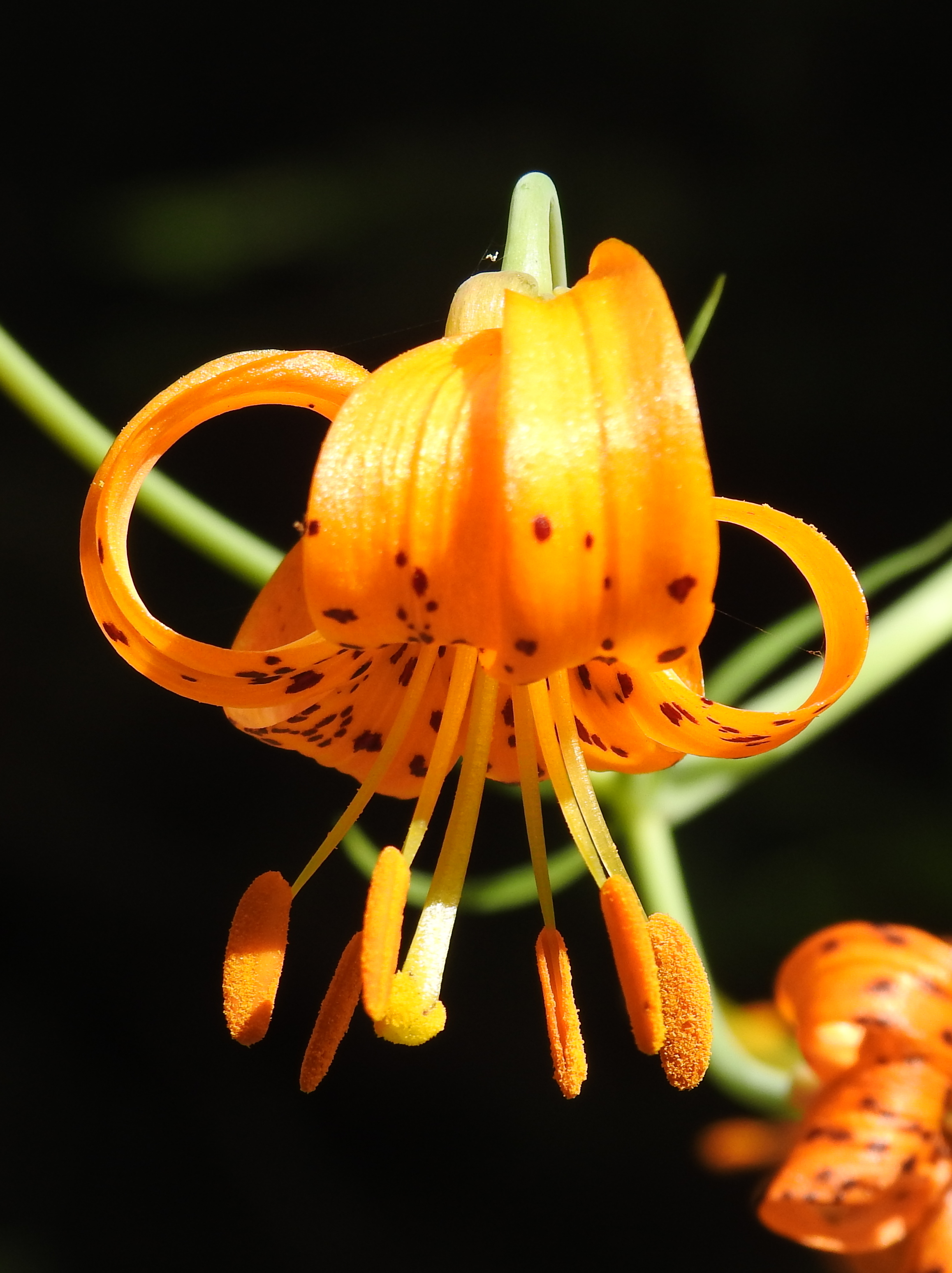
Our last night camping in Oregon was in Cannon Beach, where we had a good seafood dinner and enjoyed seeing Tufted Puffins, Pigeon Guillemots, and Common Murres on Haystack Rock. In southern Washington, we had maintenance and repairs done on the camper and the flatbed by the manufacturers. Our next destination was the northwest corner of the state, on the Olympic Peninsula. We spent most of a day looking for Hymenophyllum wrightii, a filmy fern that rarely completes the normal two-stage fern cycle involving a small gametophyte (often moss-like) and a spermatophyte (the part normally called a fern). It is found in deep crevices in the bark of old conifers, and is best located using a flashlight. We had no luck at our first site in the morning, but after well over an hour of waiting, finally got a parking spot at the trailhead to Third Beach in Olympic National Park and soon found the plants there, thanks to a photograph in iNaturalist showing an identifiable sawed tree trunk along the trail, which hosted several patches of gametophytes. This was our fourth of five genera in this very challenging family; we have only found one genus entirely on our own, the other three being courtesy of very good directions from others.

We spent three nights at the Heart O’ The Hills Campground in Olympic National Park, recovering from the last few hectic weeks. There we enjoyed Townsend’s Chipmunks and Chickarees, as well as Gray Jays and Red-breasted Sapsuckers with young. While in the nearby town of Port Angeles getting supplies, I thought we should take a quick look at an area that my notes said was reputed to have Aplodontia, though I could not figure out where I got that information. I had grown pessimistic about the chances of seeing Aplodontia without a timely report of an active burrow, but the trailhead was only a mile away. To our amazement, we quickly found scores of burrows! None showed obvious recent activity, but they didn’t look really old, either; obviously there was a viable population here. With five hours until sunset, we ran errands, had a wonderful seafood dinner at the Kokopelli Grill, and got our gear ready.
![Erythranthe lewisii, Tipsoo L., Mt. Rainier NP, WA [timestamp 15 hours late]](https://nomadic-naturalists.org/wp-content/uploads/2023/09/dscn5766.jpg)
We parked at the 9/11 Memorial Waterfront Park, conveniently open until 11 p.m., and walked down to the shoreline, taking the Olympic Discovery Trail west towards the ferry terminal. We started searching 75 minutes before sunset, using thermal imagers to look for warmer burrows that might contain animals. After half an hour, Eileen noticed a burrow with fresh dirt near its entrance (which we believed was piled there since our earlier walk), and so we parked ourselves in front of it and waited. About 15 minutes later, the thermal imager showed a nose in the burrow entrance, as the animal pushed more soil out, and 10 minutes after that, we had a new mammal on our life lists! Over the next half hour we had about eight good views at three different burrow openings (obviously connected underground), including one view of almost the whole animal. It was a truly fabulous experience! And it only took 40 years after my naming my car after them … clearly not a very successful tactic.
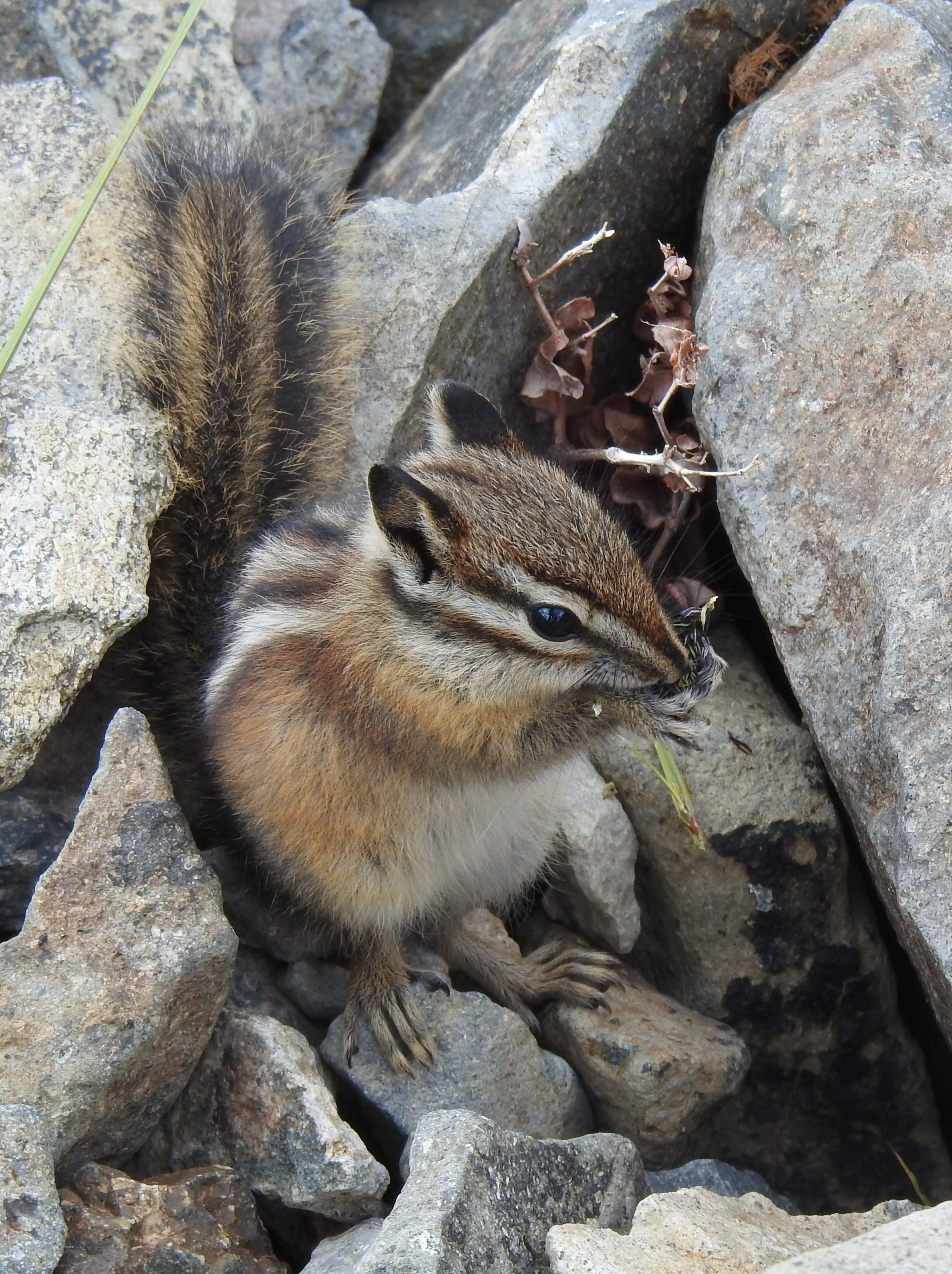
Our next destination was Mount Rainier, where we had a concentration of five target genera in a relatively small area, four of which we found. The hike to Frozen Lake, a favorite of ours, was excellent for mammals; we saw Mountain Goat (at the southernmost edge of its native range), Cascade Golden-mantled Ground Squirrel (found only in its namesake mountain range), American Pika, and Yellow-Pine Chipmunk. Here we also found the target genus Elmera, a member of the saxifrage family, nicely in flower, but we saw only a single plant, occupying just a one-foot long section of a crack between rocks. A lovely pond across Route 410 from Tipsoo Lake yielded two new grass genera and had a family of Spotted Sandpipers, the babies just balls of fluff and utterly adorable.

We then began a series of epic drives between far-flung genera: Oreopteris a scarce fern, northeast of Seattle; Sandbergia, in the mustard family member, in north-central Washington; Microgilia, a phlox family member, in south-central Oregon (we missed this as the area had burned); Chionophila (a Penstemon segregate) in central Idaho; Catabrosa, an aquatic grass, and Herrickia, a type of aster, in northeast Utah; and Chamaerhodos, a small herb in the rose family, in west-central Wyoming. We had spectacular scenery and interesting geology on these drives, and other highlights included massive examples of Western Red-Cedar (Thuja plicata) on the Lake 22 Trail in Baker-Snoqualmie National Forest, WA; and superb displays of Explorer’s Gentians (Gentiana calycosa) at Fourth of July Lake in the Sawtooth Mountains, ID.

Mercifully, we again had a small concentration of four targets in the greater Yellowstone area, limiting our driving for a few days. We entered Yellowstone National Park at 6 a.m. to avoid a delay at the entrance station, and enjoyed having the place to ourselves for over an hour. We had wonderful experiences with Bison in the Hayden Valley, and really enjoyed exploring “Silver Gate”, a short one-way pull-out south of Mammoth Hot Springs, where we found yet another saxifrage genus, Telesonix, with tiny magenta flowers. Exiting the park to the northeast, we drove through the Lamar Valley, the best area in Yellowstone for mammals. We saw a fresh Bison carcass about a quarter of a mile off the road, attended only by Common Ravens, but made note of the location to check the following morning.

After camping outside the park (it is nearly impossible to camp inside without making reservations many months in advance), we returned to the carcass before dawn. The thermal imager showed a large, warm shape at the carcass, so we knew it would be an exciting view once it got light. And it was – a Grizzly Bear was actively feeding and a second could be seen farther away. Well after dawn, a Gray Wolf materialized from nowhere (it was probably out of view in the sunken Lamar River channel) and started trying to procure some of the carcass! The grizzly did not view this favorably and we watched in amazement for the next hour and a half as the wolf taunted the bear and the bear chased the wolf perhaps 15 times! The wolf got some bison meat and also caught a raven. While we stood at this one spot for five hours or so, we also saw Badger, Pronghorn, Bison, and Uinta Ground Squirrel, and on the way back to camp we added Red Fox to the list. What a show!

Leaving Yellowstone and proceeding northeast on the Beartooth Highway, a dramatic high-elevation road, we had truly awful weather to look for the tiny, arctic-alpine Icegrass (Phippsia algida) in soggy tundra at 10,600 feet of elevation: it was about 40F, with whipping winds and frigid rain. It took almost every piece of outdoor clothing I had to venture out, but the wet tundra had a superb collection of flowering plants (whereas nearly everything was done flowering in drier habitats), and after a bit of a search I finally located some small clumps of the cute grass in gelatinous, boot-sucking mud.
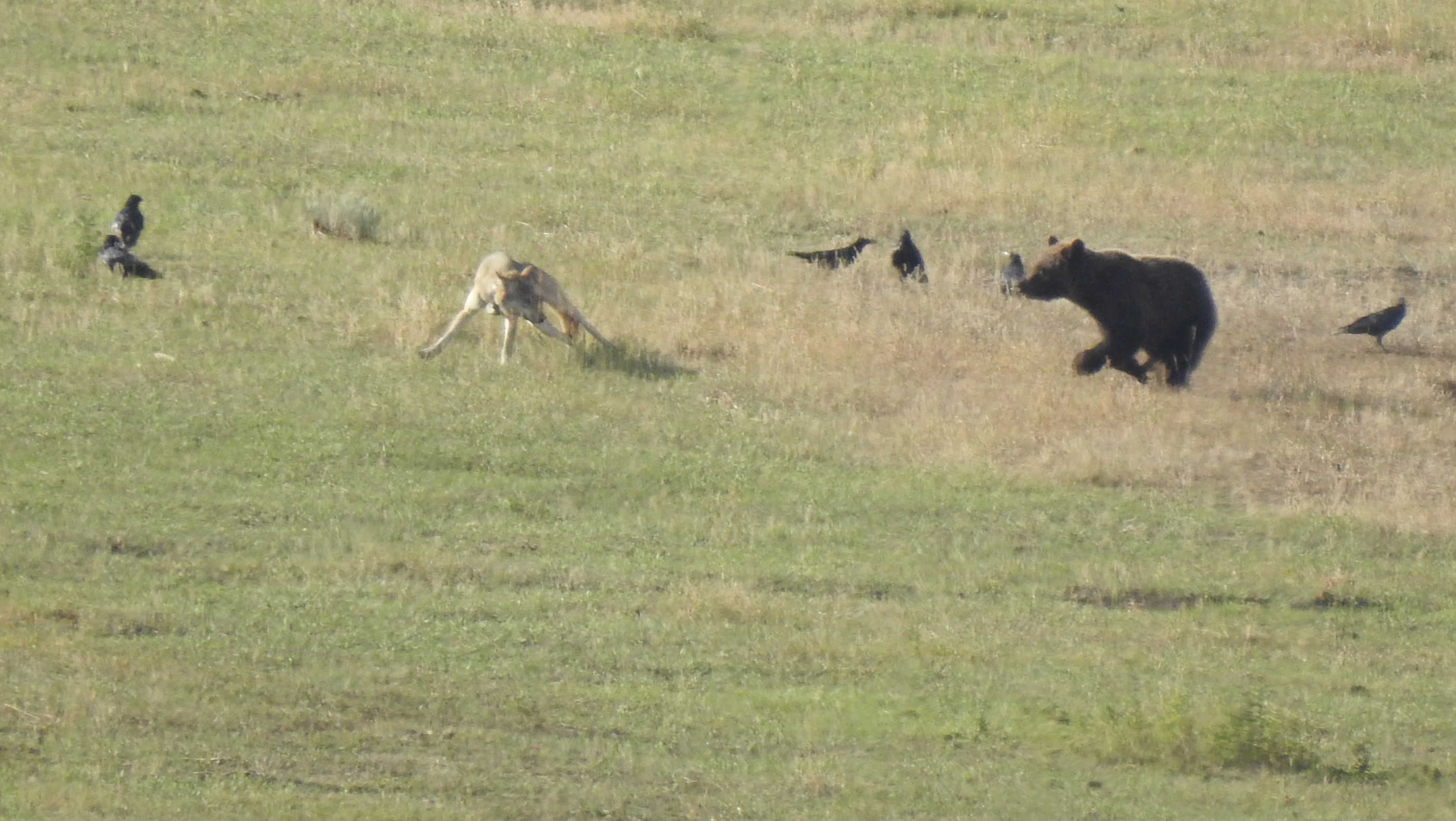
One of the more interesting places we visited this year was the Bighorn Medicine Wheel, off extremely steep Route 14A, east of Lovell, in north-central Wyoming. This is a completely uncommercialized Native American site held sacred by 81 tribes. Rocks are arranged here in a circle with lines radiating from the center, so that the entire feature resembles a wooden wheel with spokes. It is situated on a high point, at the crossroads of many ancient trails, and provides a panoramic view of the surroundings. Here we found Kelseya, which forms moss-like cushions in vertical fissures within vertical limestone cliffs, and saw Rocky Mountain Parnassian, an ethereal, high-elevation butterfly related to swallowtails.
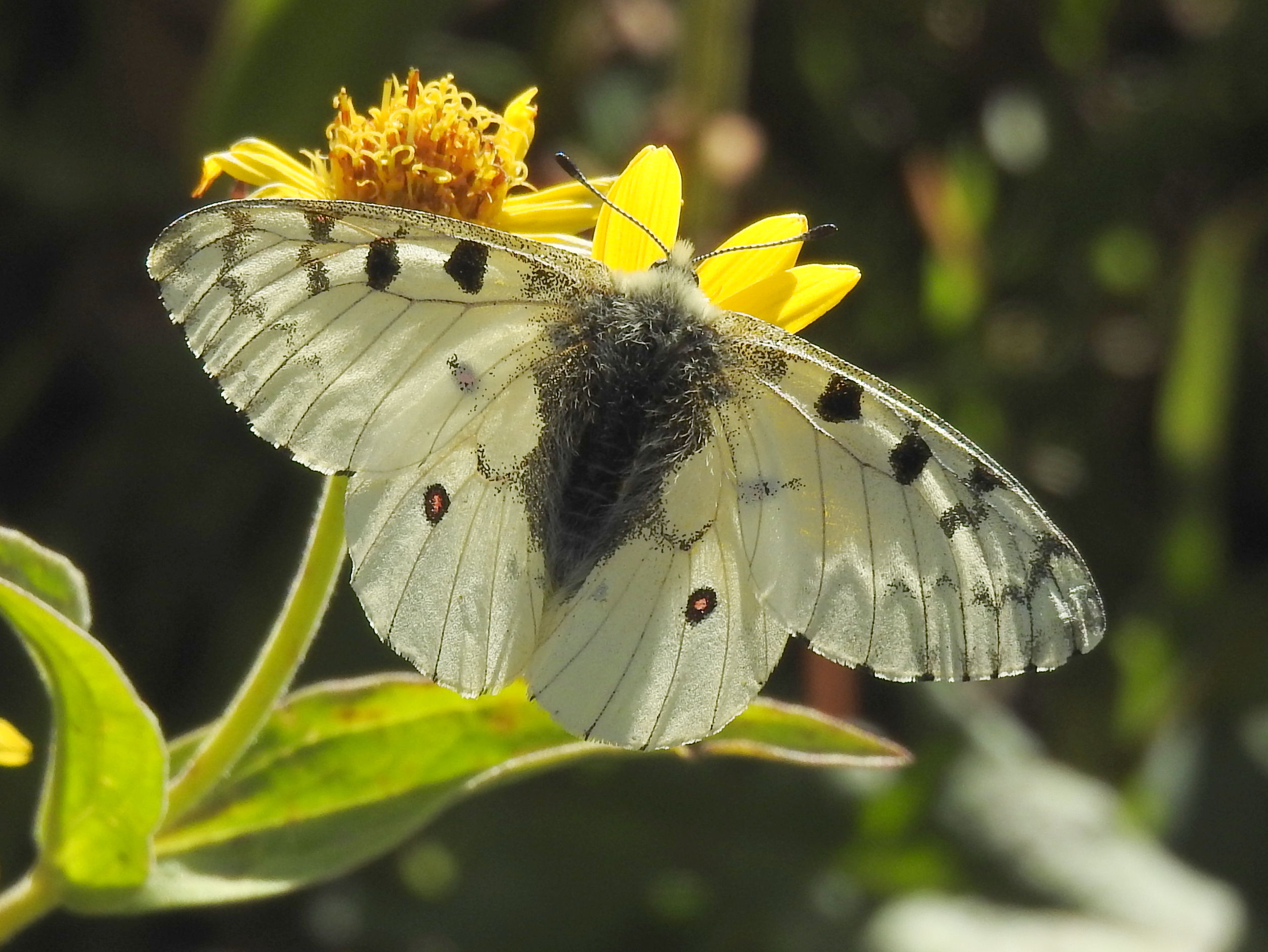
Another long drive brought us to the Snowy Mountains of southeast Wyoming, where we located a new gentian family member, Lomatogonium, and had good looks at a Mink. The final chapter in this saga involved a short foray into Colorado, mostly to look for plants we missed in the spring. On Mount Evans we were thrilled to see a silver-phase Red Fox, which was almost entirely black with frosted hair tips – very handsome. We drove a few miles up the road and stopped to look for a new sagebrush genus (Delwiensia). By the time we found it, the fog had rolled in and we did not feel we could safely drive forward, or turn around, and so waited five hours for it to clear enough to proceed! Returning to camp, Eileen spotted a mother moose with two young, all with immaculate pelage, which crossed the road in front of us and afforded fabulous looks!
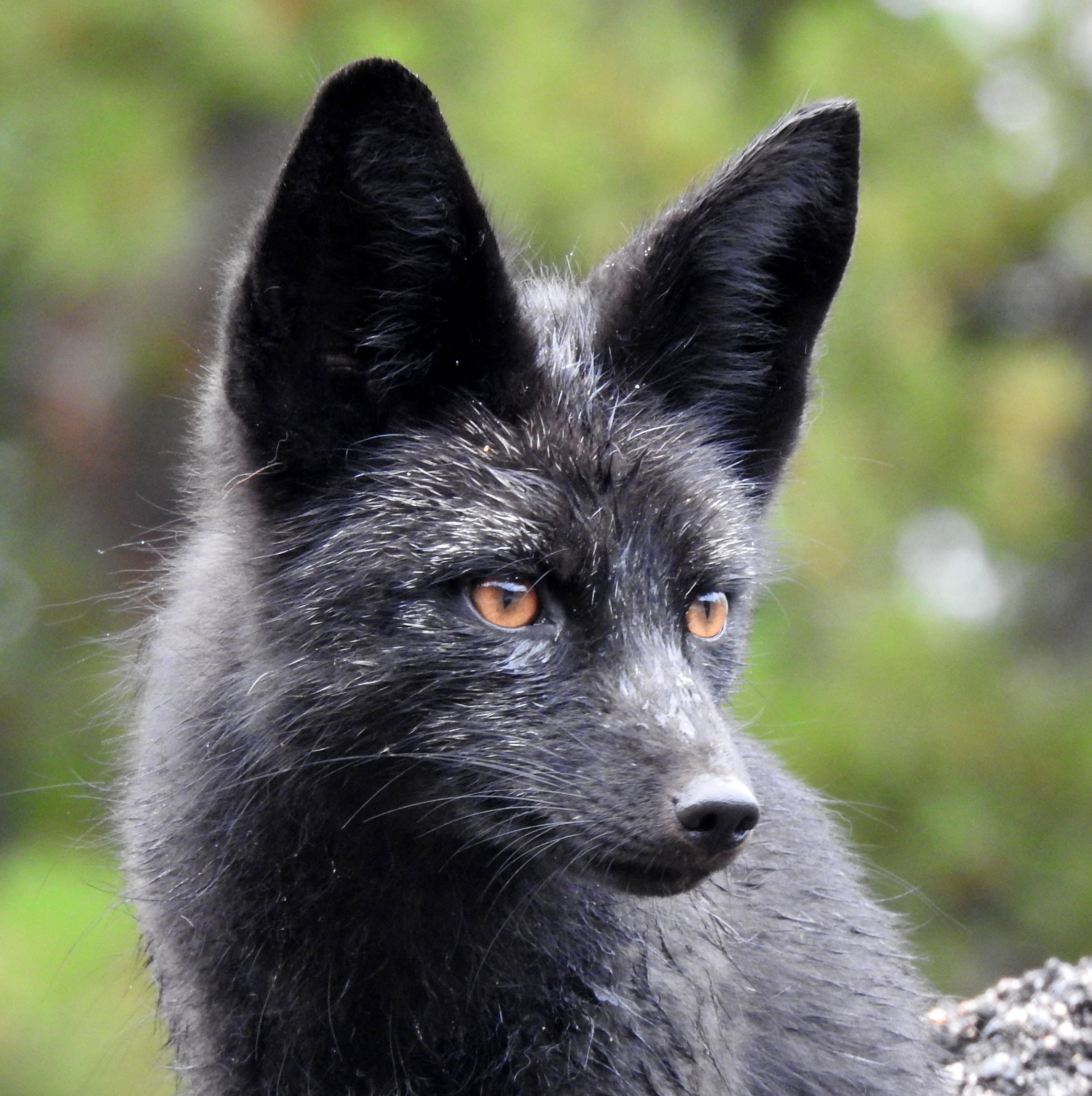
Our last good find was on Pike’s Peak, where we finally saw Adoxa, a small herb related to viburnum and elderberry shrubs. It has an extremely unusual inflorescence, with one terminal flower, two flowers opposite each other below that, and two more opposite flowers below them, but rotated 90 degrees on the flowering stem, giving five flowers that could be described as being in up, north, south, east, and west positions. I don’t know of anything else remotely like it. This species is much more common in Europe than here.
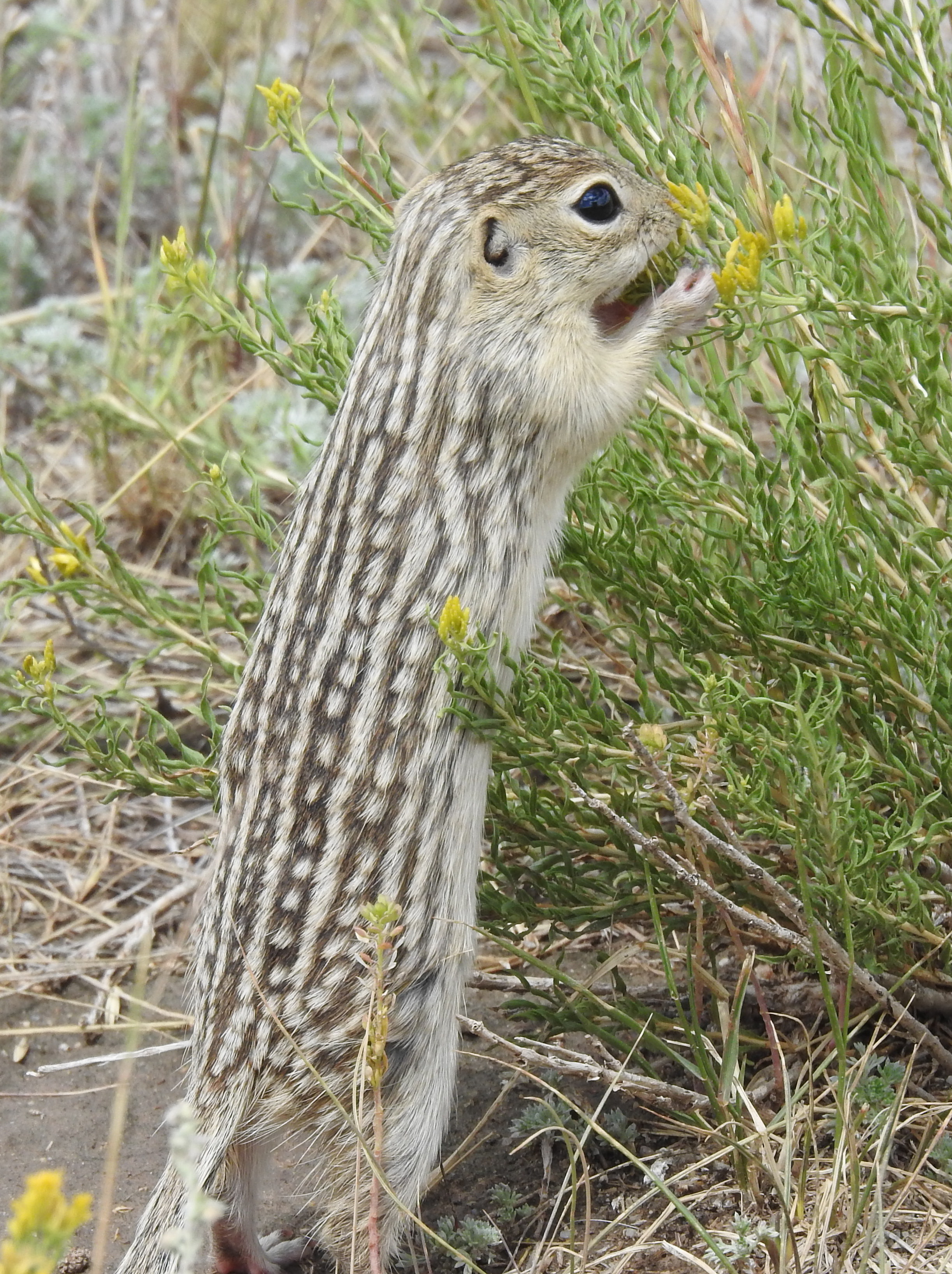
Leaving Colorado, we had an explosive flat tire that actually was so mangled it came partway off the rim, making it difficult to get the jack in place. We have had exactly one flat tire each year of retirement, always a rear tire, so we hope we’ve met the requirement for 2023!
Fabulous pics as usual esp the Johanneshowellia – what a find! We had to look up Aplodontia too as had never heard of it. It was only a 1 ½ hour ferry ride on the Coho ferry from us! Who knew? Stay safe you guys & enjoy Brazil Rio Negro.
LikeLike
Sounds like a successful summer – covering lots of miles, but well-rewarded with great sitings! Literally, no moss grows under your feet or tires! Hope that was the last blown tire for a long time… love reading about your adventures.
Connee and Bob Reau
LikeLike